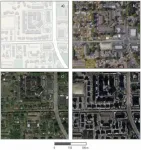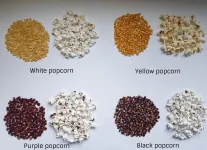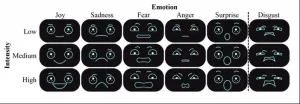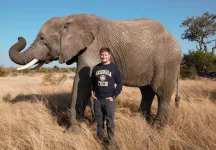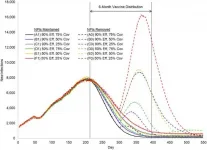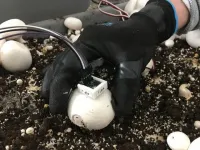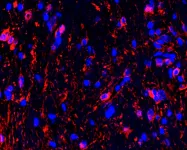(Press-News.org) Can you trust the map on your smartphone, or the satellite image on your computer screen?
So far, yes, but it may only be a matter of time until the growing problem of "deep fakes" converges with geographical information science (GIS). Researchers such as Associate Professor of Geography Chengbin Deng are doing what they can to get ahead of the problem.
Deng and four colleagues -- Bo Zhao and Yifan Sun at the University of Washington, and Shaozeng Zhang and Chunxue Xu at Oregon State University -- co-authored a recent article in Cartography and Geographic Information Science that explores the problem. In "Deep fake geography? When geospatial data encounter Artificial Intelligence," they explore how false satellite images could potentially be constructed and detected. News of the research has been picked up by countries around the world, including China, Japan, Germany and France.
"Honestly, we probably are the first to recognize this potential issue," Deng said.
Geographic information science (GIS) underlays a whole host of applications, from national defense to autonomous cars, a technology that's currently under development. Artificial intelligence has made a positive impact on the discipline through the development of Geospatial Artificial Intelligence (GeoAI), which uses machine learning -- or artificial intelligence (AI) -- to extract and analyze geospatial data. But these same methods could potentially be used to fabricate GPS signals, fake locational information on social media posts, fabricate photographs of geographic environments and more.
In short, the same technology that can change the face of an individual in a photo or video can also be used to make fake images of all types, including maps and satellite images.
"We need to keep all of this in accordance with ethics. But at the same time, we researchers also need to pay attention and find a way to differentiate or identify those fake images," Deng said. "With a lot of data sets, these images can look real to the human eye."
To figure out how to detect an artificially constructed image, first you need to construct one. To do so, they used a technique common in the creation of deep fakes: Cycle-Consistent Adversarial Networks (CycleGAN), an unsupervised deep learning algorithm that can simulate synthetic media.
Generative Adversarial Networks (GAN) are a type of artificial intelligence, but they require training samples -- input -- of whatever content they are programmed to produce. A black box on a map could, for example, represent any number of different factories or businesses; the various points of information inputted into the network helps determine the possibilities it can generate.
The researchers altered a satellite image of Tacoma, Washington, interspersing elements of Seattle and Beijing and making it look as real as possible. Researchers are not encouraging anyone to try such a thing themselves -- quite the opposite, in fact.
"It's not about the technique; it's about how human being are using the technology," Deng said. "We want to use technology for the good, not for bad purposes."
After creating the altered composite, they compared 26 different image metrics to determine whether there were statistical differences between the true and false images. Statistical differences were registered on 20 of the 26 indicators, or 80%.
Some of the differences, for example, included the color of roofs; while roof colors in each of the real images were uniform, they were mottled in the composite. The fake satellite image was also dimmer and less colorful, but had sharper edges. Those differences, however, depended on the inputs they used to create the fake, Deng cautioned.
This research is just the beginning. In the future, geographers may track different types of neural networks to see how they generate false images and figure out ways to detect them. Ultimately, researchers will need to discover systematic ways to root out deep fakes and verify trustworthy information before they end up in the public view.
"We all want the truth," Deng said.
INFORMATION:
Popcorn. What would movies and sporting events without this salty, buttery snack? America's love for this snack goes beyond these events. We consume 15 billion quarts of popped popcorn each year.
When it comes to popcorn, consumers want a seed-to-snack treat that leaves more snacks than seeds when popped. This means when they pop the corn, there shouldn't be many unpopped kernels left in the bowl.
Maria Fernanda Maioli set out to determine the properties affecting popping expansion in popcorn. The team's research was recently published in Agronomy Journal, a publication of the American Society of Agronomy.
"The way kernels expand is a basic, ...
BEER-SHEVA, Israel...June 2, 2021 - As drones become more ubiquitous in public spaces, researchers at Ben-Gurion University of the Negev (BGU) have conducted the first studies examining how people respond to various emotional facial expressions depicted on a drone, with the goal of fostering greater social acceptance of these flying robots.
The research, which was presented recently at the virtual ACM Conference on Human Factors in Computing Systems, reveals how people react to common facial expressions superimposed on drones.
"There is a lack of research on how drones are perceived and understood by humans, which is vastly different than ground robots." says Prof. Jessica Cauchard together with Viviane Herdel of BGU's Magic Lab, in the BGU Department of Industrial ...
New research from the Georgia Institute of Technology finds that elephants dilate their nostrils in order to create more space in their trunks, allowing them to store up to nine liters of water. They can also suck up three liters per second -- a speed 50 times faster than a human sneeze (150 meters per second/330 mph).
The Georgia Tech College of Engineering study sought to better understand the physics of how elephants use their trunks to move and manipulate air, water, food and other objects. They also sought to learn if the mechanics could inspire the creation of more efficient robots that use air motion to hold and move things.
While octopus use jets of water to move and archer fish shoot water above the surface to catch insects, the Georgia Tech researchers found that elephants ...
Boulder, Colo., USA: Article topics include Zealandia, Earth's newly recognized continent; the topography of Scandinavia; an interfacial energy penalty; major disruptions in North Atlantic circulation; the Great Bahama Bank; Pityusa Patera, Mars; the end-Permian extinction; and Tongariro and Ruapehu volcanoes, New Zealand. These Geology articles are online at https://geology.geoscienceworld.org/content/early/recent.
Mass balance controls on sediment scour and bedrock erosion in waterfall plunge pools
Joel S. Scheingross; Michael P. Lamb
Abstract: Waterfall plunge pools experience cycles of sediment aggradation and scour that modulate ...
CHAPEL HILL, NC - Research published by JAMA Network Open shows how non-pharmaceutical interventions (NPIs) like mask wearing and physical distancing can help prevent spikes in COVID-19 cases as populations continue to get vaccinated. The study, led by Mehul Patel, PhD, a clinical and population health researcher in the department of Emergency Medicine at the UNC School of Medicine, focuses on the state of North Carolina. Similar modeling studies have been used in different states, and can serve as guidance to leaders as they make decisions to relax restrictions and safety protocols.
"The computer simulation modeling allows us to look at multiple factors that play a role in decreasing the spread of COVID-19 as vaccines are ...
PROVIDENCE, R.I. [Brown University] -- By delivering small electrical pulses directly to the brain, deep brain stimulation (DBS) can ease tremors associated with Parkinson's disease or help relieve chronic pain. The technique works well for many patients, but researchers would like to make DBS devices that are a little smarter by adding the capability to sense activity in the brain and adapt stimulation accordingly.
Now, a new algorithm developed by Brown University bioengineers could be an important step toward such adaptive DBS. The algorithm removes a key hurdle that makes it difficult for DBS systems to sense brain signals while simultaneously delivering stimulation.
"We know that there are electrical signals ...
Researchers in Penn State's College of Agricultural Sciences have developed a robotic mechanism for mushroom picking and trimming and demonstrated its effectiveness for the automated harvesting of button mushrooms.
In a new study, the prototype, which is designed to be integrated with a machine vision system, showed that it is capable of both picking and trimming mushrooms growing in a shelf system.
The research is consequential, according to lead author Long He, assistant professor of agricultural and biological engineering, because the mushroom industry has been facing labor shortages and rising labor costs. Mechanical or robotic picking can help alleviate those problems.
"The mushroom industry in Pennsylvania is producing about two-thirds of the mushrooms ...
Older adults with cognitive impairment are two to three times more likely to fall compared with those without cognitive impairment. What's more, the increasing use of pain medications for chronic pain by older adults adds to their falls risk. Risks associated with falls include minor bruising to more serious hip fractures, broken bones and even head injuries. With falls a leading cause of injury for people aged 65 and older, it is an important public health issue to study in order to allow these adults increased safety and independence as they age.
Although elevated risk of falls due to use of pain medication by older adults has been widely studied, less ...
In a study of mice, researchers showed how the act of seeing light may trigger the formation of vision-harming tumors in young children who are born with neurofibromatosis type 1 (NF1) cancer predisposition syndrome. The research team, funded by the National Institutes of Health, focused on tumors that grow within the optic nerve, which relays visual signals from the eyes to brain. They discovered that the neural activity which underlies these signals can both ignite and feed the tumors. Tumor growth was prevented or slowed by raising young mice in the dark or treating them with an experimental cancer drug during a critical period of cancer development.
"Brain cancers recruit the resources they need from the environment ...
Researchers world-wide are focused on clearing the toxic mutant Huntingtin protein that leads to neuronal cell death and systemic dysfunction in Huntington's disease (HD), a devastating, incurable, progressive neurodegenerative genetic disorder. Scientists in the Buck Institute's Ellerby lab have found that the targeting the protein called FK506-binding protein 51 or FKBP51 promotes the clearing of those toxic proteins via autophagy, a natural process whereby cells recycle damaged proteins and mitochondria and use them for nutrition.
Publishing in Autophagy , researchers showed that FKBP51 promotes autophagy through a new mechanism that could avoid worrisome side ...
